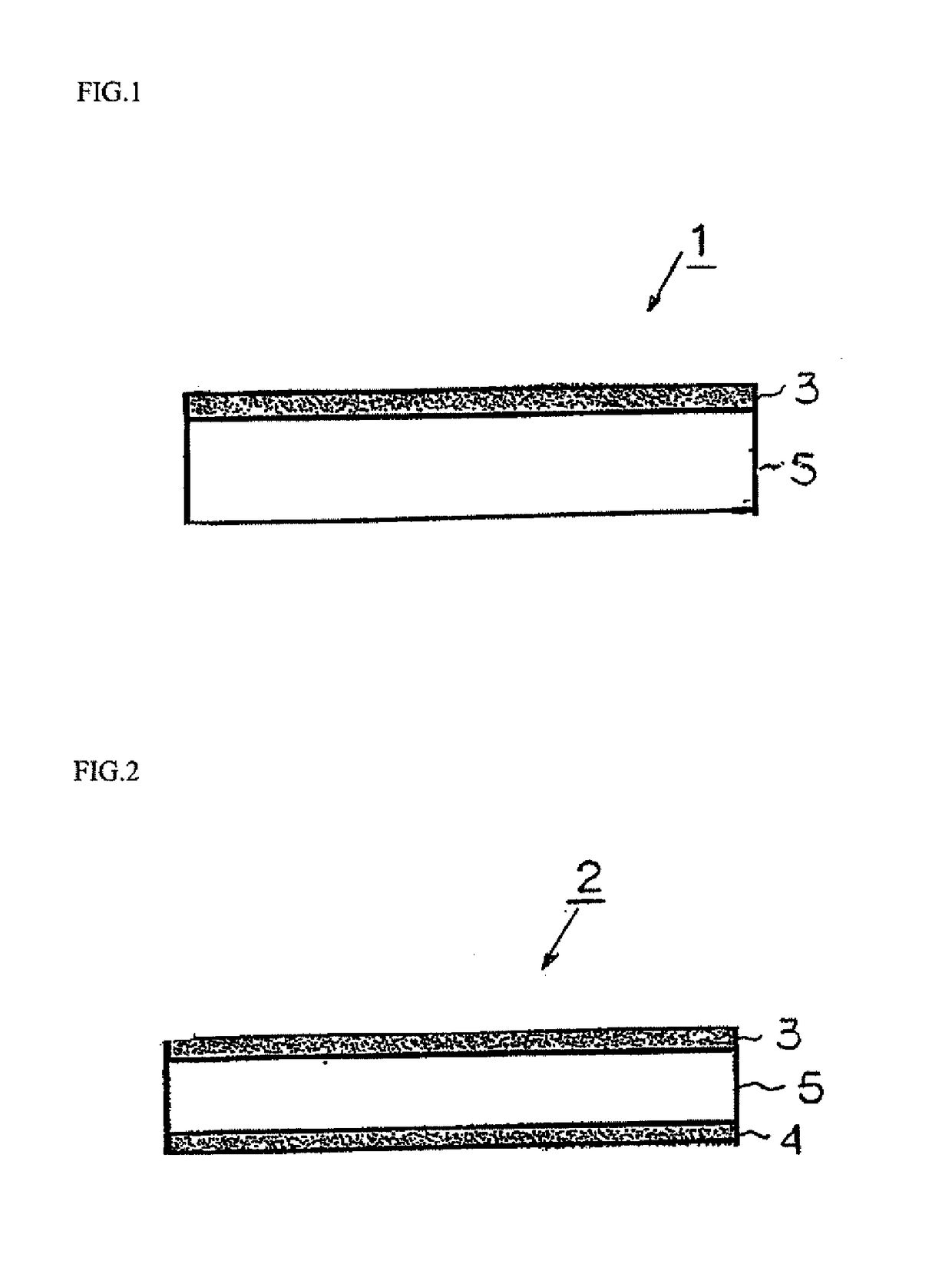Titanium composite material and titanium material for hot rolling
a composite material and titanium technology, applied in the field of titanium composite material and titanium material for hot rolling, can solve the problems of high corrosion resistance, high cost of heat-resistant titanium alloys in comparison to commercially pure titanium, and inability to expect high corrosion resistan
- Summary
- Abstract
- Description
- Claims
- Application Information
AI Technical Summary
Benefits of technology
Problems solved by technology
Method used
Image
Examples
example 1
Example 1-1
[0332]Rectangular slabs consisting of commercially pure titanium of JIS Class 1 were prepared by (a) vacuum arc remelting and breakdown and forging (VAR+breakdown and forging), (b) electron beam remelting and direct casting (EBR+DC), or (c) plasma arc melting and direct casting (PAR+DC) to form slabs 6 as illustrated in FIGS. 3 and 4. The thickness of each slab 6 was 100 mm or 250 mm.
[0333]A commercially alloy sheet composed of Ti-0.06%Pd (ASTM Grade 17) was used for the titanium alloy sheets 7 to be attached to the surfaces of the respective slabs 6. Note that, to make the thickness of the outer layers 3 and 4 of the titanium composite material 2 to be produced that is illustrated in FIG. 2 a predetermined thickness, the thickness of the titanium alloy sheets 7 was adjusted in advance by cutting before being joined to the respective slabs 6.
[0334]When joining the titanium alloy sheets 7 to the respective slabs 6, the titanium alloy sheets 7 were attached to surfaces corr...
example 1-2
[0344]Rectangular slabs consisting of commercially pure titanium of JIS Class 1 were prepared by electron beam remelting and direct casting to form slabs 6 as illustrated in FIG. 4. The thickness of each slab 6 was 100 mm or 200 mm. Material having the same chemical composition as the target chemical composition for the outer layers 3 and 4 of the titanium composite material 2 to be produced was used for the titanium alloy sheets 7 to be attached to the surface of the slab 6.
[0345]Using the same method as in Example 1-1, welding, hot rolling and pickling of the slab 6 and titanium alloy sheets 7 were performed to thereby produce the titanium composite material 2 having a thickness of 5 mm. The method for evaluating the titanium composite material was the same as in Example 1-1.
[0346]Further, for the purpose of comparison with the titanium composite material 2 according to the present invention, corrosion-resistant titanium materials (ASTM Grade 7, Grade 17, Grade 19) and a sheet hav...
example 1-3
[0359]Rectangular slabs containing predetermined alloying components were prepared by vacuum arc remelting and breakdown and forging (VAR+breakdown and forging) to form the slabs 6 illustrated in FIG. 4. The thickness of each slab 6 was 200 mm. A commercially alloy sheet composed of Ti-0.06%Pd (ASTM Grade 17) was used for the titanium alloy sheets 7 to be attached to the surfaces of the respective slabs 6.
[0360]Using the same method as in the above Example 1-2, welding, hot rolling and pickling of the slab 6 and titanium alloy sheets 7 were performed to thereby produce the titanium composite material 2. The method for evaluating the titanium composite material 1 was the same as in Examples 1-1 and 1-2. Table 4 shows a summary of the results.
TABLE 4Corrosion RateIntermediate(mm / year)Outer LayerOuter LayerLayer3% BoilingThicknessOccupancyThicknessHydrochloricTest NumberSlab Type(μm)Ratio (%)(μm)Acid SolutionRemarksConventionalASTM Gr17—100—0.36VAR + breakdown and forging slab;Material...
PUM
| Property | Measurement | Unit |
|---|---|---|
| thickness | aaaaa | aaaaa |
| thickness | aaaaa | aaaaa |
| chemical composition | aaaaa | aaaaa |
Abstract
Description
Claims
Application Information
 Login to View More
Login to View More - R&D
- Intellectual Property
- Life Sciences
- Materials
- Tech Scout
- Unparalleled Data Quality
- Higher Quality Content
- 60% Fewer Hallucinations
Browse by: Latest US Patents, China's latest patents, Technical Efficacy Thesaurus, Application Domain, Technology Topic, Popular Technical Reports.
© 2025 PatSnap. All rights reserved.Legal|Privacy policy|Modern Slavery Act Transparency Statement|Sitemap|About US| Contact US: help@patsnap.com



